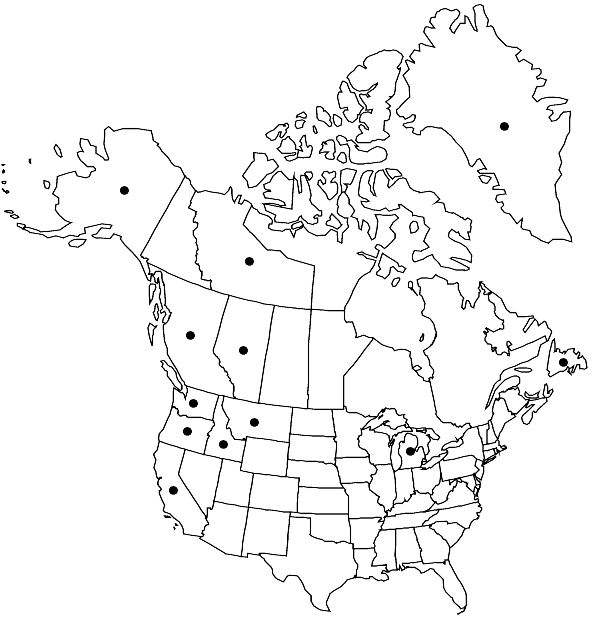Grimmia ramondii
Lindbergia 1: 128. 1972,.
Plants in robust, loose, arched-ascending, readily disintegrating patches, brownish green distally, blackish proximally. Stems 5–10 cm, central strand absent. Leaves loosely appressed when dry, patent when moist, broadly ovatelanceolate, tapering to an acute, slightly toothed apex, 2–3 × 0.4–0.6 mm, keeled, margins recurved on both sides, awns absent, costa stout, with two abaxial lamellae (or wings) forming parallel ridges along its length; basal juxtacostal laminal cells yellow, linear, sinuose, thick-walled; basal marginal laminal cells quadrate to short-rectangular, slightly thick-walled; medial laminal cells quadrate to rectangular, sinuous, thick-walled; distal laminal cells 1-stratose, margins 2-stratose. Gemmae absent. Sexual condition dioicous. Seta cygneous to arcuate at maturity, flexuose when old, 3–5 mm. Capsule occasionally present, exserted, obloid, yellowish green to yellowish-brown, plicate when empty, exothecial cells thin-walled, annulus present, operculum rostrate, peristome teeth purple, divided nearly to base into two partly adhering segments, papillose. Calyptra mitrate.
Habitat: Dry to damp acidic rock
Elevation: low to high elevations (0-2000 m)
Distribution

Greenland, Alta., B.C., Nfld. and Labr. (Nfld.), N.W.T., Alaska, Calif., Idaho, Mich., Mont., Oreg., Wash., Europe, Asia (China), Asia (Japan), n Africa
Discussion
Grimmia ramondii occurs near sea level in arctic areas and along the West Coast. In the latter region, however, it is more common in mid-elevation montane sites and may also be found above the tree line. It differs from most Grimmia species by its lack of awns, winged costa, and tall, loose growth form. At first sight, G. ramondii has the habit of a Racomitrium. However, the sporophyte has an arcuate rather than straight seta, and the capsules are striate rather than smooth. Because of its habit and the absence of a central strand, K. G. Limpricht ([1885–]1890–1903, vol. 1) placed it, together with G. hartmanii and G. atrata, in Dryptodon, a genus intermediate between Grimmia and Racomitrium. There are many other Grimmia species, however, without a central strand, and G. hartmanii and G. atrata have already been removed from Dryptodon, so there is no reason to maintain that monotypic genus. Grimmia ramondii may be confused with G. hartmanii and G. elatior. However, the lack of awns, the Racomitrioideae-like areolation, and the distinct costal wings distinguish it easily from those species.
Selected References
None.